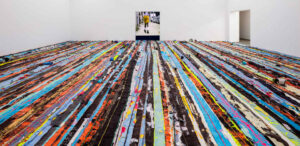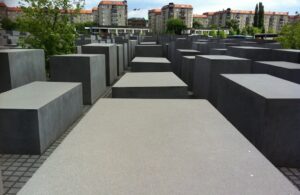What do we owe the past?
Among other things, we might owe the past a chance to speak for itself, yet that seemingly easy task is actually far more difficult than it might seem. Let’s take a quick walk through the streets of Berlin to see how this might be so.
East Berlin, the former capital of the communist DDR, is very popular with visitors and it’s almost guaranteed you’ll end up there during your visit to the capital. History, and its co-option by politicians past and present, is on full display there.
Start by looking carefully at the facades of buildings. Some look very old indeed, with their sculptured facades and elegant exteriors speaking of a lost age. When you see these heavy looking olde-world style facades, the chances are you’re looking at a building from the age of Kaiser Wilhelm II, the last of Germany’s emperors from the Second Reich. These buildings represent Berlin at its imperial height around 1900 or so, and many still survive.
You might also find Art Nouveau from the same epoch, with their grand sweeping arcs and floral decoration, an attempt to bring nature and movement into the industrial urban landscape.
But after walking a bit and paying close attention, you’ll probably notice something a bit strange. Many of the facades of these buildings, while clearly dating back well over a century, look brand new. Yes, it’s a fresh coat of paint, but if you look closely, the decoration just doesn’t look that old. It looks, as often as not, as if it appeared a year or two ago.
You’ll also start to see buildings that look similar in shape and size but with smooth, or nearly smooth facades. No decoration or frippery on show here. These look by turns old or new, depending on the building. Before you’ve gone 15 minutes into your stroll, you might have some serious questions about what you’re really looking at, and you’d be right to have those questions as something is indeed very much up.
After WW 2, Berlin needed Housing – No time for repairing to Original Style. Neither was it Money for it
After the war, the vast majority of Berlin’s housing stock was damaged or destroyed. The city needed housing, and fast. Often there wasn’t time to repair the buildings to their original style. Structures missing facades just needed new facades, not things that recalled a lost age. There was no money or time for such indulgences.
Then we have to consider that much of Berlin was under the control of the communists, who wished to remake the human soul into what was sometimes called in the west «homo sovieticus.» Looking past the disdain, what the communists were trying to do in ideological terms was rewire the human brain in order to clear it of the centuries of encrusted capitalist build-up. Now, look at those decorated buildings and you’ll see that the first floor is often the most elaborately decorated. That’s the «belle etage,» the beautiful floor and it’s where the most important or richest family lived. The next floor up is less decorated and housed the second wealthiest family, reflected in the fact that they had to walk up an extra flight of steps. This pattern repeated until the roof. Basically, the higher up the building you lived in, the lower your financial and social standing. This was reflected in the decoration becoming less elaborate the higher up the façade you looked. Now, this rule was often broken, but as a general pattern, it holds.
When the communists took over, they seized their ideological chance and repaired the façade entirely without decoration. No longer could you tell a person’s value to society based on the floor or the decoration of the façade. Similar things happened in the west, it’s true. But there the emphasis was on other ideologies and movements, not least just the need to get things repaired and working again.
In today’s Berlin, you’ll see those buildings with the fresh looking 1900-era façades and suddenly it hits you. Those frontages evoke or even copy the original façade, but they are often indeed modern replacements. The new Germany has, in essence, decided that the old communist style repairs are not worth preserving, either because they are boring or because in the former East, they evoke the DDR. Those facades from the 1950s and 1960s are fast being replaced by copies of those that were there before the war.
History is about choice. We choose what stories to tell and which stories to omit, and in Berlin’s ongoing restoration, we see this happening all the time. But look at what’s going on here. When we restore something to a certain era, we are in essence privileging that era over other time periods. We’re saying, essentially, that the time of Kaiser Wilhelm is somehow more worthy of restoration than preserving or repairing DDR-era structures. And, to be fair, in the 50s and 60s, the Communist leadership decided that their current ideology superseded any need to be loyal to the era of the Kaiser or indeed the roaring 20s.
So, when you walk the streets of Berlin, ask yourself not just what we owe the past, if anything, but also which past we owe the most to? Is one era «better» than another? Consider that many former DDR citizens are still alive and some of them (by no means all) take offence at their history being effectively erased in favour of implicitly praising a long vanished Imperial regime that nobody alive today has any memories of.
In Berlin, restoration is not simply a question of taste or aesthetics. It’s also heavily freighted by ideology and the privileging of certain eras – and all the values that that era is held to exemplify – over others.
Architecture, just like history, can be extremely provocative in Germany’s capital. As you walk, ask yourself to what era you’d restore these buildings to, and then picture trying to justify it. It’s an eye-opening experience and one that will make your walk through the city that much more fascinating!




